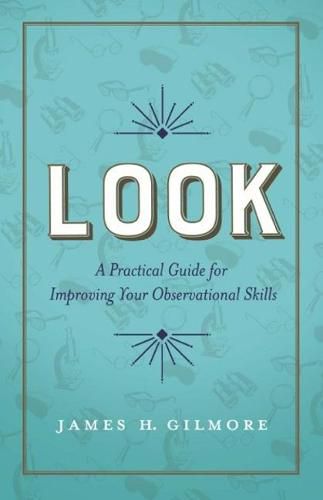Readings Newsletter
Become a Readings Member to make your shopping experience even easier.
Sign in or sign up for free!
You’re not far away from qualifying for FREE standard shipping within Australia
You’ve qualified for FREE standard shipping within Australia
The cart is loading…






Mastering the Way You See the World
Inspired by Edward de Bono’s Six Thinking Hats method, Jim Gilmore has created a unique and useful tool to help our ability to perceive. In his latest book, Look: A Practical Guide for Improving Your Observational Skills, Gilmore introduces the metaphor of six looking glasses. Each looking glass represents a particular skill to master in order to enhance the way we look at the world.
The six skills include binoculars, bifocals, magnifying glass, microscope, rose-colored glasses, and blindfold looking. Each looking glass provides an observational lens through which to see the world differently. This framework will help its users to:
These varying perspectives offer myriad practical applications: They can help any executive, manager, or designer more richly observe customer behavior, philanthropists and policy makers more keenly identify human needs, and anyone else interested in innovative thinking to first ground their ideation in practical observation.
Gilmore helps readers grasp the Six Looking Glasses by including helpful everyday examples and practice exercises throughout. Put into practice, this method of looking will help you see the world with new eyes.
$9.00 standard shipping within Australia
FREE standard shipping within Australia for orders over $100.00
Express & International shipping calculated at checkout
Mastering the Way You See the World
Inspired by Edward de Bono’s Six Thinking Hats method, Jim Gilmore has created a unique and useful tool to help our ability to perceive. In his latest book, Look: A Practical Guide for Improving Your Observational Skills, Gilmore introduces the metaphor of six looking glasses. Each looking glass represents a particular skill to master in order to enhance the way we look at the world.
The six skills include binoculars, bifocals, magnifying glass, microscope, rose-colored glasses, and blindfold looking. Each looking glass provides an observational lens through which to see the world differently. This framework will help its users to:
These varying perspectives offer myriad practical applications: They can help any executive, manager, or designer more richly observe customer behavior, philanthropists and policy makers more keenly identify human needs, and anyone else interested in innovative thinking to first ground their ideation in practical observation.
Gilmore helps readers grasp the Six Looking Glasses by including helpful everyday examples and practice exercises throughout. Put into practice, this method of looking will help you see the world with new eyes.